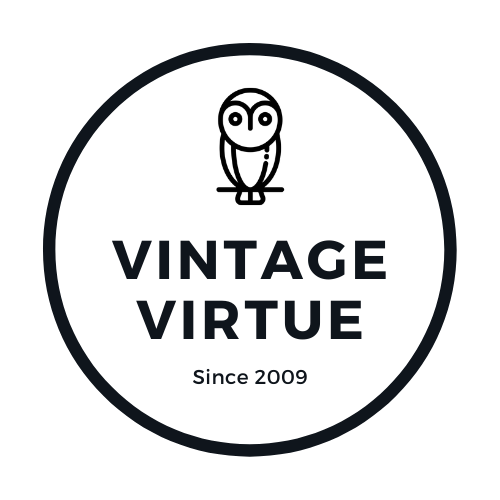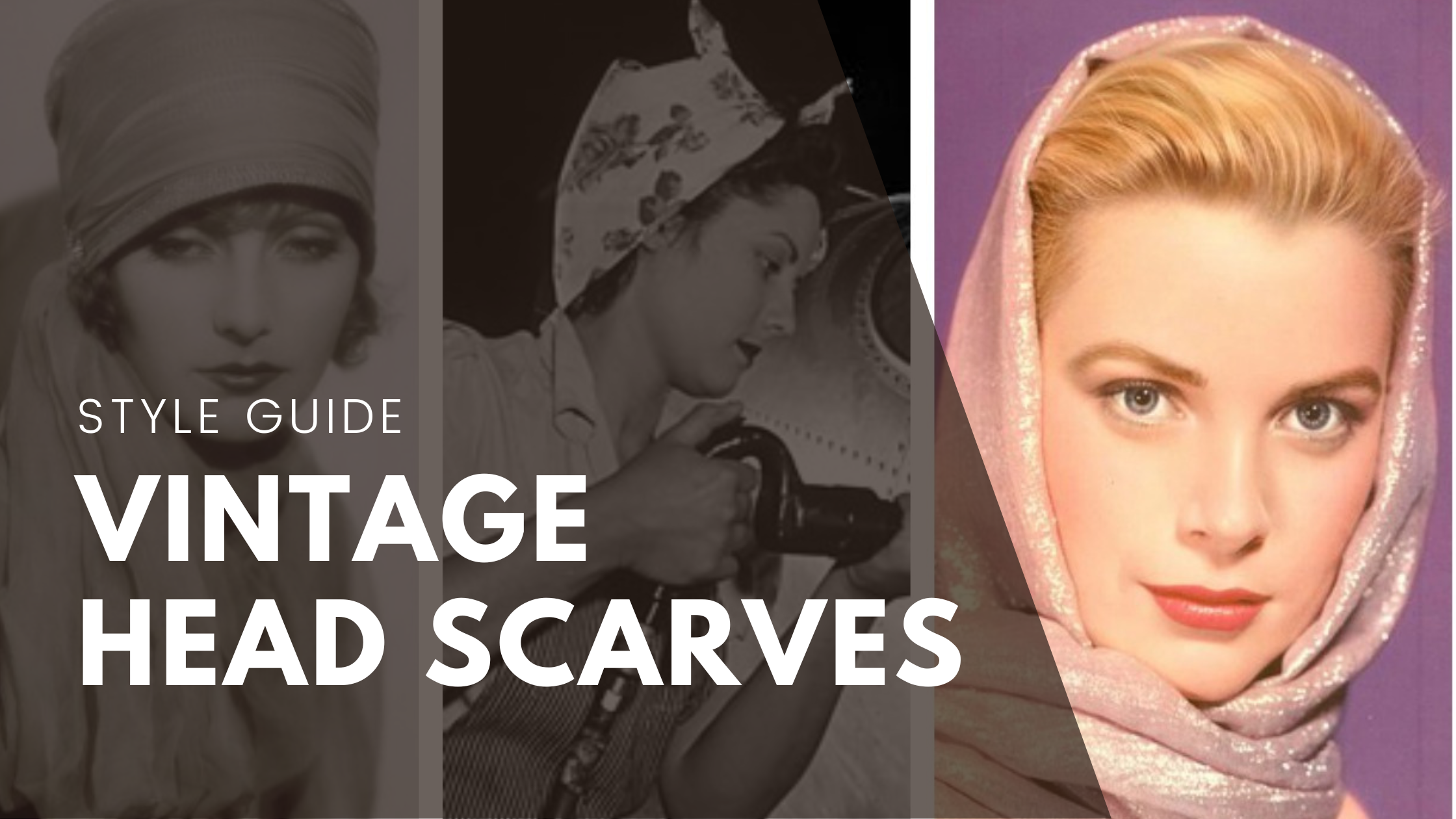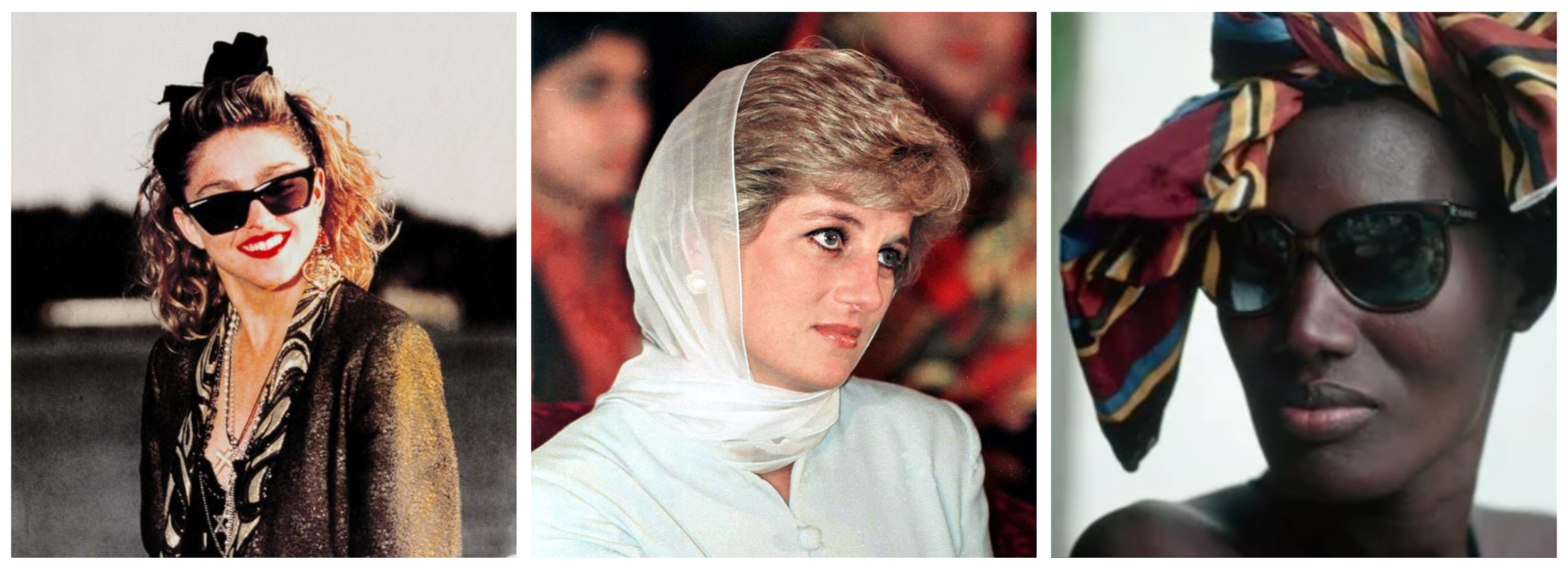Vintage Style Guide - Headscarf Trends Through the 20th Century
Vintage headscarves are a timeless accessory that can elevate any outfit, adding a touch of old-world glamour and sophistication. Worn by style icons like Audrey Hepburn, Grace Kelly, and Jackie Kennedy, headscarves have been a fashion staple for decades. They are versatile, easy to wear, and can be styled in many ways to suit any occasion.
If you want to add some vintage charm to your wardrobe, a headscarf is a must-have accessory. Whether you're going for a retro look, a bohemian vibe, or want to add a pop of color to your outfit, a headscarf is the perfect accessory to achieve your desired look. So, grab your favorite scarf, and let's get started! In this blog post, we'll show you how to wear vintage headscarves.
Trends of the 20s & 30s, Flappers and Hollywood
In the 1920s and 1930s, headscarves were a popular accessory that epitomized the glamour and sophistication of the era. Headscarves of this era were often made from luxurious fabrics like silk and satin and adorned with intricate patterns, fringe, and tassels. Women of this time often wore their hair short and styled in finger waves, making headscarves the perfect accessory to add some extra flair to their hairdos.
During the 1920s, headscarves were often worn, tied tightly around the head, covering the ears and forehead, and tucked neatly under the chin. This style was popularized by flapper girls who wanted to show off their short, bobbed hair while maintaining elegance and femininity. In the 1930s, headscarves became more voluminous, draped loosely over the head, creating a soft, romantic look paired with dresses or blouses in matching or contrasting colors to create a cohesive outfit.
The rise of Hollywood cinema helped popularize headscarves in the 1920s and 1930s, with movie stars like Greta Garbo and Marlene Dietrich often seen wearing headscarves on and off the silver screen, inspiring women worldwide to embrace this stylish accessory.
Trends of the 1940s, Rosie the Riveter
The 1940s was a decade marked by war, which influenced fashion trends. Headscarves became a practical accessory for women who worked in factories or served in the armed forces, providing a way to keep hair out of the face while on the job. In addition to their practicality, headscarves in the 1940s were seen as a patriotic accessory by many, with scarves featuring designs and patterns that reflected national pride.
During the 1940s, headscarves were often worn in a turban style, with the scarf wrapped around the head and tied at the back, leaving the hair covered and protected. Scarves were made from functional materials like cotton or rayon and were available in various colors and patterns. Headscarves also became a popular accessory for women on the home front, adding a touch of glamour and sophistication to everyday outfits.
Trends of the Sophisticated 50s
The 1950s was a decade of elegance and sophistication, and headscarves of the time reflected this refined aesthetic. Women of the 1950s often wore their hair in elaborate updos, making headscarves the perfect accessory to complete their polished look. Scarves of the 1950s were often made from luxurious materials like silk and satin and were available in a range of colors and patterns to suit any outfit.
One of the most iconic styles of headscarves from the 1950s was the "babushka" style, in which the scarf was tied tightly around the head and chin, covering the hair completely. This style was popularized by European women who were trying to protect their hair from the elements, but it quickly became a fashion statement in its own right.
Trends of the 1960s, from Mod to Boho
The 1960s was a decade of social and cultural revolution, and headscarves of the time reflected the bold and daring spirit of the era. Women of the 1960s began to embrace more casual and relaxed hairstyles, and headscarves became a popular accessory to add color and personality to these more laid-back looks. Scarves of the 1960s were often made from lightweight materials like cotton or chiffon and were available in bright, psychedelic patterns that reflected the spirit of the times.
One of the most iconic styles of headscarves from the 1960s was the "hippie" style, in which the scarf was tied loosely around the head and allowed to drape over the hair and shoulders. This style was often paired with flowy maxi dresses and bell-bottom jeans, creating a bohemian-inspired look that many women of the era embraced. Headscarves of the 1960s were also often worn in a more structured style, with the scarf tied tightly around the head and tucked neatly under the hairline. The era's bold patterns and vibrant colors continue influencing modern fashion trends.
Trends of the 1970s, the Disco Years
The 1970s was a decade marked by a fusion of different styles and cultures, and headscarves of the time reflected this eclectic spirit. Scarves of the 1970s were often made from lightweight materials like cotton or silk and were available in a range of prints and patterns, from bold geometric designs to delicate florals. Women of the 1970s often wore their hair long and loose, making headscarves the perfect accessory to add a touch of bohemian flair to their looks.
One of the most iconic headscarf styles from the 1970s was the "headband" style, in which the scarf was tied tightly around the forehead, leaving the hair free to flow down the back. This style was often paired with bell-bottom jeans and peasant blouses, creating a bohemian-inspired look that many women of the era embraced. Headscarves of the 1970s were also often worn in a "turban" style, with the scarf wrapped around the head and tied at the back, creating a stylish and practical way to protect hair from the sun and wind.
Trends of the 1980s, from CBGB to Wall Street
The 1980s was a decade marked by bold and daring fashion choices, and headscarves were no exception. Women of the 1980s often incorporated headscarves into their looks to add a touch of glamour and drama. Scarves of the era were frequently made from shiny materials like silk or satin and featured bright colors and bold prints. The head wrap style, where the scarf is tied tightly around the head and hair, was a popular choice for many women of the era and was often paired with power suits and other sharp, sophisticated looks. In contrast, the headband style, with the scarf tied tightly around the forehead, was a more casual and laid-back option often paired with denim and other relaxed, everyday looks.
The 1980s was a decade of pop culture icons who helped shape the era's fashion trends. Two of the most influential style icons of the time were Madonna and Princess Diana, both known for their love of headscarves. With her edgy and rebellious style, Madonna often wore headscarves in a "pirate" style, with the scarf tied tightly around the head and hair left wild and tousled. On the other hand, Princess Diana often wore headscarves in a more refined and elegant style, with the scarf wrapped loosely around the head and draped around the neck.
An Enduring Style Accessory
Throughout the 20th century, headscarves were a versatile accessory that reflected the ever-changing fashion trends of the era. From the flapper headbands of the 1920s to the colorful turban styles of the 1970s and the bold head wraps of the 1980s, headscarves have continued to inspire fashion trends and add a touch of retro charm to modern looks. The influence of fashion icons like Audrey Hepburn, Madonna, and Princess Diana helped popularize headscarves among a new generation of fashion-conscious women, ensuring that this beloved accessory will continue to be a fashion staple for years to come. Whether worn for practical or fashion purposes, headscarves remain a timeless accessory that adds a touch of elegance, sophistication, and individuality to any outfit.








